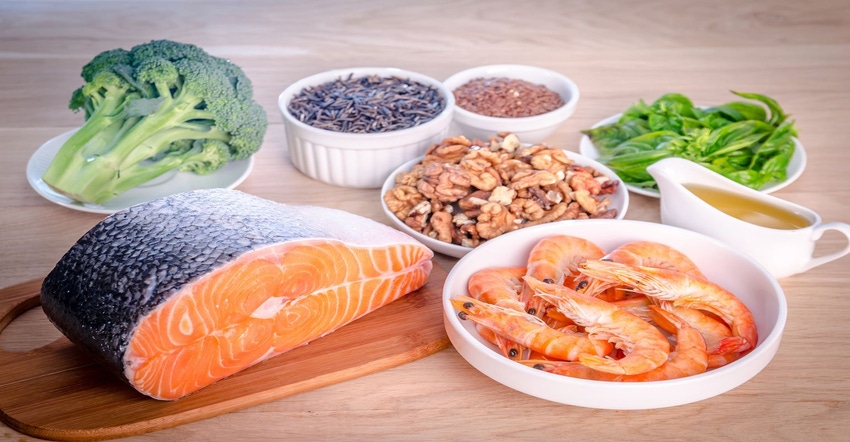The omega-3 fatty acids EPA and DHA are important for overall health, yet the majority of Americans fall short of recommended levels.

The most recent Dietary Guidelines for Americans (DGAs) recommends individuals 2 and older consume about 250 mg/day of the long-chain omega-3 polyunsaturated fatty acids (omega-3 PUFAs) eicosapentaenoic acid (EPA) and docosahexaenoic acid (DHA); pregnant women are encouraged to consume up to 300 mg/day of EPA+DHA.
Consumption of DHA and EPA, both through the diet and through supplementation, has been linked to decreased risk of cardiovascular disease (CVD) and type 2 diabetes, as well as lower blood pressure and overall mortality.
However, despite these recommendations and the noted positive effects of consuming EPA and DHA, a recent study revealed the vast majority of Americans are not consuming nearly enough of it. Research conducted by Pharmavite, makers of Nature Made vitamins and supplements, indicated up to 68% of adults and an incredible 95% of children do not consume enough omega-3s to reach DGA recommended levels.
The research, published in BMJ Open, used data from the National Health and Nutrition Examination Survey (NHANES) to determine biomarker references for EPA, DHA and docosapentaenoic acid (DPA) (2021;11:e043301). With the caveat that the most recent available NHANES data came from 2011-12, the results showed a clear lack in omega-3s in the American diet.
The data ultimately included 2,261 participants ages 3 and older, of which 47.6% were men. According to the study authors, “The mean EPA and DHA serum concentrations of 0.28% and 1.07% in children (3-19 years), and 0.61% and 1.38% in adults (20 years+), reflects the persistently low consumption of seafood and omega-3s. Using estimates of LC [long-chain] omega-3 concentrations approximately equivalent to the DGA dietary intake recommendations for EPA and DHA, nearly all children in the study, and over 68% of adults had serum LC omega-3 concentrations below those associated with U.S. Dietary recommendations for LC omega-3 consumption.”
The researchers also noted these lower levels of omega-3s were particularly troubling in certain groups: young children (3 years old and younger), Mexican American/Hispanic individuals and non-Hispanic Black individuals “tended to have particularly low serum concentrations of LC omega-3 fatty acids.” Additionally, pregnant women were deemed especially vulnerable, “as LC omega-3 fatty acid concentrations were similar to women of comparable age despite recommendations for higher EPA and DHA consumption to support infant development.”
Food & Beverage Insider insights
The most recent DGAs recommend 8 ounces of seafood per week, yet found nearly 90% of Americans fall short of this benchmark. Seafood is rich in omega-3s, which makes the overall lack of EPA and DHA in the American diet unsurprising.
In January, the seafood-rich Mediterranean diet was named U.S. News and World Report’s best for the fourth straight year. “The Mediterranean diet is one of the healthy eating plans recommended by the Dietary Guidelines for Americans to promote health and prevent chronic disease,” reported the Mayo Clinic at the time.
Seafood, however, can be both expensive and difficult to come by in certain parts of the country, and is especially difficult to convince young children to consume—perhaps explaining, in part, why children and certain communities fall so short of DGA guidelines. For this reason, it is paramount that brands and formulators work to fortify other foods with omega-3s, especially in foods designed for children, almost all of whom in the U.S. fall short of DGA guidelines for omega-3s.
Non-seafood options for omega-3 supplementation include hemp protein and oil, which boasts both omega-3s and omega-6s in a nearly ideal ratio. Flax and chia seeds, gaining popularity in everything from baked goods to beverages, also contain high levels of omega-3s; flax seeds contain 2,350 mg per tablespoon of whole seeds, while chia contains more than 5,000 mg/oz.
About the Author(s)
You May Also Like






